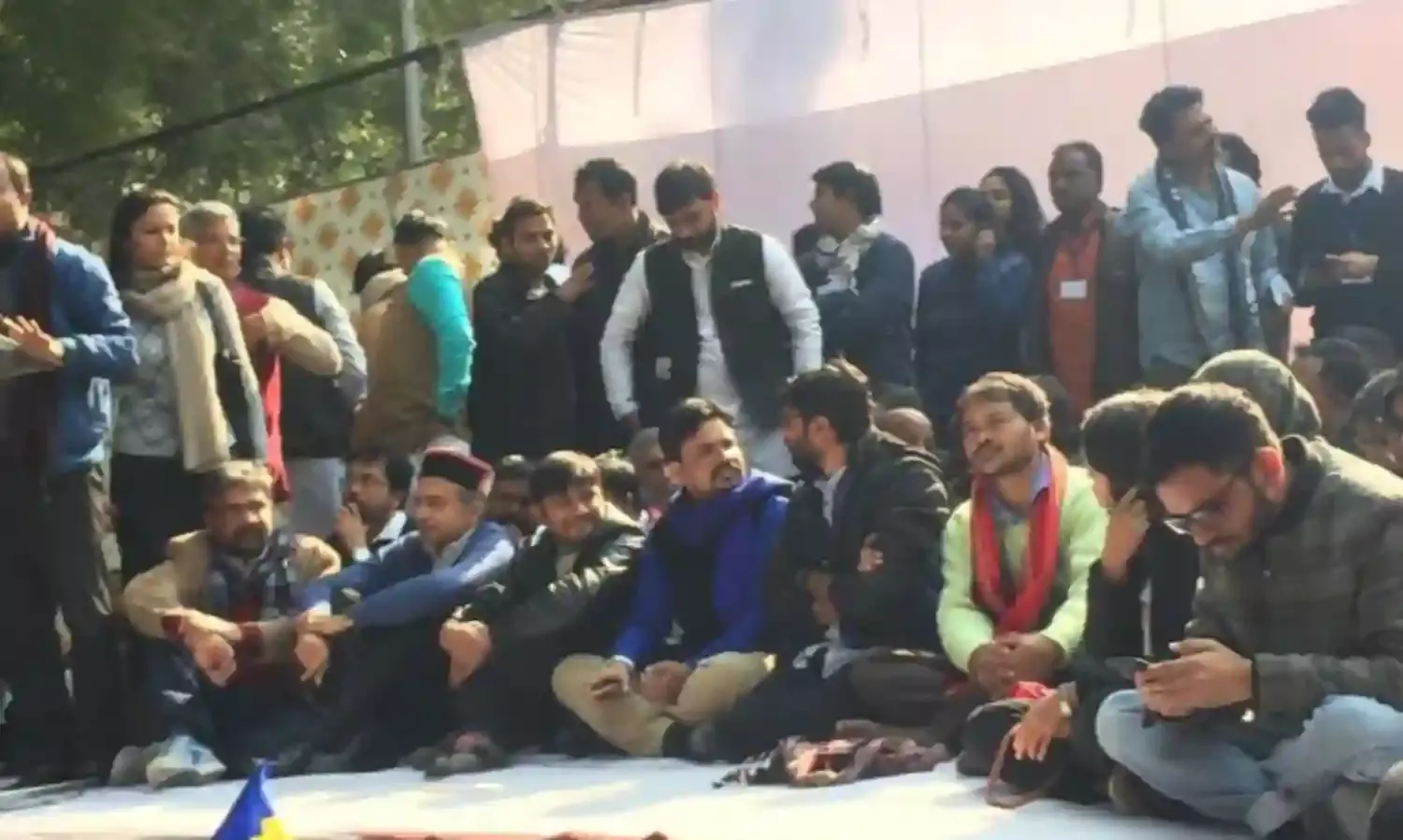10 TakeAways From the Yuva Hunkar Rally, And Not All Of Them Good
An opportunity lost?

The Yuva Hunkar Rally, held despite the official denial of permission, showcased a host of youth leaders in a strong assertion for democracy and the Constitution. Newly elected MLA from Gujarat Jignesh Mevani said as much when he held up copies of the Manusmriti and the Constitution of India saying he wanted Prime Minister Narendra Modi to choose between the two. The speeches were strong, assertive, bold with no words being minced.
Predictably the one point that the media picked up was that the crowd was not as anticipated, the numbers registering a shortfall of expectations. And the second was Republic TV on how its reporter was treated at the rally by sections of the participants. Much of what was said by the speakers was lost in this post-rally din, but then that again was to be expected. And cannot take away from the event.
However, after the crowds dispersed this writer spent the last few days speaking to several stakeholders in an effort to analyse what was gained, and perhaps lost. The following is an effort to honestly summarise the feedback, and while shooting the messenger is not just the prerogative of the Right--- independent journalists having faced the flak from all sides of the political spectrum at different points of the Indian narrative---here goes:
The Four Positives From the Hunkar rally:
- The sense to shift the focal point from the victory of Jignesh Mevani as an individual to a cause. Namely, the release of Bhim Army chief Chandrashekhar from jail and thereby bringing the Uttar Pradesh organisation into the larger fold as it were. In fact the Bhim Army volunteers formed a substantial segment of the not very large crowd at the rally;
- The courage and boldness on display as all raised a voice for democracy and the Constitution, shunned religiosity in government, and did not mince words in castigating the assault on rights and justice. In an environment where many Opposition leaders hesitate to speak out, this was amplified.
- A message that for the youth caste and religion does not matter was clear from the natural composition of speakers, and of course the content in the speeches. Unity of India remained the theme.
- And of course a solid demonstration of the capability and ability of the new leaders was visible before the nation. Perhaps, in itself carrying a lesson for the more entrenched parties that a new language, a new courage, and a new agenda were fast becoming the tools of democracy and like Bob Dylan wrote so evocatively, the old order was fast changing.
Six Negatives:
- Ego’s and personalities. On display to many within. The strength of youth solidarities is that these are truly plural and cannot be dominated by any one person or group. The platform thus, to survive will have to be democratic, broad based and above all inclusive.
- While there was apparent and welcome solidarity on the dais, it was also visible that this was limited as the solidarities of Delhi were not drawn into the movement; that it was dominated by a small group from Jawaharlal Nehru University (with presence from Jamia Millia negligble, and Delhi University not even represented). The result was a smaller crowd than seen in similar rallies before with even the Bhim Army meeting a few months ago for the release of Chandrashekhar registering a huge presence, as compared to the Hunkar rally.
- A certain ensuing disappointment amongst those who wanted and expected the Hunkar rally to break new ground. The almost obssessive focus with a certain channel and individual experiences cut into what should have been a national call with a national agenda.
- The larger inclusiveness that alone can make such movements successful and not narrow them into fringe corners was missing from the Rally. A major negative that can--if unchecked-- reduce this major initiative into a fringe, instead of a widespread movement.
- A common minimum agenda that will draw the maximum participation and not allow the movement to be dominated by any one ideology or group. So a clear signal from the rally did not emanate, in that all know what the leaders stand against, but what are the specifics they stand together for? And what others willing or wishing to support them can expect.
- The control sought to be exerted on some of the participants by the Left and the Right.. There has to be space for the large middle progressives and others not necessarily aligned with the hard Left, or with the sections of the Right that were present on the dais.



